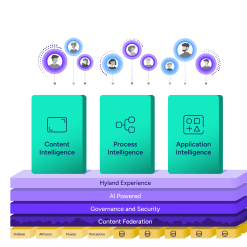With so many emerging innovations, and new ones being developed every day, it can be difficult to keep up with the latest technical breakthroughs.
We’ll give you a primer on infrastructure as a service — call it IaaS 101. We’ll discuss how infrastructure as a service works, its pros and cons, how it differs from other services and what the future could hold.
What is infrastructure as a service (IaaS)?
Infrastructure as a service is a basic cloud computing service model that lets you “rent” cloud computing, storage and networking resources from a vendor.
The customer can buy these services on demand, scaling up or back as needed. The infrastructure rented can include data storage, services and virtual machines, networking tools, computing power and other building blocks for cloud IT.
How IaaS works
IaaS vendors all have slightly different offerings and pricing. Once the required services and corresponding vendor are identified, the organization requests the appropriate computing, storage and/or networking resource. The user then pays for the resource using one of a variety of billing models depending on the service.
However, infrastructure as a service is just one available cloud model; software as a service (SaaS) and platform as a service (PaaS) are other available options. IaaS is the most basic of these three cloud services and offers the least level of resource control.
We’ll take a closer look at how they differ further below.
> Read more | Understanding cloud computing for nontechnical professionals
Examples of IaaS
Amazon Web Services (AWS), Microsoft Azure and Google Cloud are three commercial providers of infrastructure as a service and other cloud services.
Some of the most typical use cases for IaaS include:
- Data storage
- Backup and recovery
- Website hosting
- High-performance computing (HPC) involving massive amounts of data
Pros of IaaS
Three of the biggest business advantages of infrastructure as a service are decreased cost, improved security and enhanced agility. IaaS is also backed by industry experts.
- Cost — IaaS avoids the upfront costs of setting up a data center, including its physical footprint. The IaaS vendor takes on the ongoing costs of provisioning and upgrading data center hardware, firmware and related software. Additionally, IaaS is priced on a pay-as-you-go basis, meaning you can scale up or down as needed without hassle.
- Security — Business continuity, disaster recovery and security are major drivers for businesses moving to the cloud. The IaaS provider takes on backups, redundancies and defense-in-depth security, and it deploys all of this at a level that most businesses wouldn’t be able to match on their own.
- Agility — The ability to quickly scale resources can exponentially increase business agility when compared with handling spikes in-house. With IaaS, if demand suddenly spikes, you can autoscale up to accommodate the surge and roll back when needed. This automation is much easier than assembling additional in-house resources or taking the time set up new servers.
- Expert staff — Considering the industry-wide shortage of cloud experts, it can be difficult for non-cloud organizations to recruit, hire and retain properly trained and credentialed professionals to run their cloud services. With IaaS, the vendor provides access to technology experts who are highly trained in every area of IaaS deployment — including governance, risk, compliance and security — for seamless, high-quality service delivery.
Cons of IaaS
On the flip side, infrastructure as a service does come with some disadvantages. Three outlined here are limited customizability, the high level of expertise required and decreased control.
- Limited customization — For better or for worse, IaaS delivers a “one-size-fits-all” approach that can be detrimental or beneficial depending on who you ask. Users may be limited to using only the specific functionality, performance and integrations delivered by the service vendor. Some companies don’t need unlimited customizability options, but others would prefer more options for tailoring and fine-tuning.
- Expertise required — Unlike other as-a-service models, IaaS requires that you have the in-house technical expertise required for installation, configuration and ongoing maintenance of your applications, related operating systems and middleware. This can pose a challenge to small teams without dedicated IT personnel. Likewise, this requirement can also add on to an existing IT team’s heavily laden workload.
- Control — The entire administration of the IaaS is taken care by the provider, meaning the user leaves critical processes, hardware and software to the vendor to handle and control. Like the limited customization topic above, this lack of direct control could be a stress relief for some users or a cause for concern for others. Most vendors have a responsibility matrix that clearly outlines the responsibilities of the vendor and those of the customer.
How IaaS differs from other services
As time passes, more organizations are opting for cloud deployment because of the improvement it delivers for efficiency, productivity and availability. The cloud can also be broken down into individual service models. Each have their own benefits, and your organization can talk to a trusted resource to determine which path is right for their desired result.
SaaS and PaaS
The differences between IaaS, SaaS and PaaS boil down to what specific services your organization needs and the level of complexity it can accommodate.
- IaaS, as we’ve already described, provides fundamental computing infrastructure like servers, networking tools and processing power that you can purchase and use on-demand from a vendor.
- Platform as a service, or PaaS, gives developers a ready-to-use platform for building applications, including infrastructure. A PaaS platform lets developers create complex applications and manage data but offload maintenance tasks and infrastructure.
- Software as a service, or SaaS, lets you use software on demand without worrying about installing, upgrading or maintaining that software or the infrastructure.
For more information on the differences between IaaS, PaaS and SaaS, read this blog written by Anne Siess, a Hyland partner marketing specialist.
IaaS vs. bare metal as a service (BMaaS)
Bare metal as a service, or BMaaS, provides an even lower level of control compared with traditional IaaS. In a BMaaS environment, resources are still provisioned on demand, made available over the internet and billed on a pay-as-you-go basis. The difference appears in what the end user is leveraging.
Unlike infrastructure as a service, BMaaS does not provide end users with already virtualized compute, network or storage resources — rather, it gives access to the underlying hardware itself. For users familiar with traditional data centers, BMaaS can offer high performance potential, which is a top priority for HPC and graphics processing unit (GPU) computing.
IaaS vs. Serverless architecture
New cloud models are rolling out that can integrate with and complement infrastructure as a service. Serverless architecture is one emerging model that gives users new options for how to run their applications.
Serverless architecture is defined as a way to build and run applications and services without having to manage infrastructure. Your application still runs on servers, but all the server management is done by the service provider. You no longer have to provision, scale and maintain servers to run your applications, databases and storage systems. Once deployed, the serverless app will respond to traffic and automatically scale as needed.
The difference between IaaS and serverless architecture is that serverless apps are launched only as needed or as triggered. With IaaS, the user pays the service provider for always-on functionality; with serverless architecture, the user pays only when the code is running. So in practice, an app would have negligible charges during off-peak hours like the early morning, and during a traffic surge, can scale to accommodate without getting a developer involved.
One example of serverless architecture is AWS Lambda. Introduced in 2014, AWS Lambda enables users to create functions, apps and runtimes and then upload them for execution. Lambda runs the code on high-availability compute infrastructure while Amazon performs all administration of resources — meaning all you have to do is supply the code in a language Lambda supports.
What’s next for IaaS
Experts agree that use of infrastructure as a service will continue to grow in the future. As more and more businesses and teams realize the benefits of as-a-service offerings and cloud migration, more focus can be put on value-added, productive work instead of focusing on hardware. And on the service provider side, users and customers will come to expect higher-quality, faster service — a surefire reason for providers to invest in innovative ways to exceed migration expectations.
Hyland and cloud computing
No matter what the future has in store for technology and beyond, Hyland wants you to be ready to thrive in it. As a leading content services provider, we offer dynamic cloud offerings to help your organization deliver better experiences to the people they serve.
Learn more about Hyland in the cloud:
Hyland on AWS
Hyland is listed on the AWS Marketplace. Learn more about the benefits of purchasing there, including the ability to:
- Streamline procurement
- Implement controls and automate provisioning
- Manage software budgets with cost transparency










